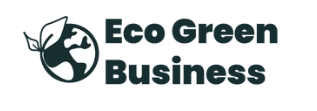How to Build a Profitable Eco Cleaning Category in Your Store
Sustainability is no longer just a buzzword. It is now a business driver. Across the UK and Europe, shoppers are actively seeking eco-friendly cleaning alternatives, from compostable bin liners to plastic-free detergents. For retailers, that demand creates a unique opportunity: build a dedicated eco cleaning category that not only meets customer needs but also drives long-term profit.
Here is how you can create a profitable, future-ready eco cleaning section in your store.
1. Understand Consumer Demand
Eco cleaning is no longer niche. Reports show that over 70% of consumers in the UK prefer to buy from retailers offering sustainable options, especially in household categories. Shoppers are moving away from bulky plastic bottles and chemical-heavy products, replacing them with plant-based and plastic-free solutions.
For retailers, that means stocking eco swaps is not just about doing good. It is about staying competitive and meeting clear consumer demand.
2. Choose the Right Eco Swaps
Not every “green” product delivers the same ROI. Focus on household essentials that shoppers buy regularly and will come back for month after month. These repeat-purchase staples are the backbone of a profitable category.
Some proven high-demand swaps include:
-
Compostable bin liners → A simple upgrade from traditional plastic bags.
-
Laundry sheets → Lightweight, space-saving, and repeat-purchase friendly.
-
Unbleached parchment paper and recycled foil → Everyday kitchen staples made sustainable.
-
Dishwasher sheets (coming soon) → A game-changing alternative to pods and gels.
By starting with essentials, you build trust and create a habit loop for eco-conscious customers who will return for their refills.
3. Balance Sustainability With Affordability
One of the biggest myths in retail is that eco-friendly means more expensive. While premium eco brands exist, there are affordable, accessible alternatives that still deliver strong margins.
Eco Green Living products are designed to be cost-competitive, allowing retailers to offer eco choices without scaring away budget-conscious shoppers. This balance between price and sustainability is key to building a category that scales.
4. Merchandise for Maximum Impact
How you present eco cleaning products in-store or online makes all the difference. A few best practices:
-
Create a dedicated eco section → Group products together to highlight the category.
-
Use shelf talkers and POS displays → Educate customers quickly with benefits like “Plastic-Free” or “Plant-Based.”
-
Cross-merchandise with related categories → Place parchment paper and foil near baking goods, or laundry sheets near fabric care items.
-
Online optimization → Use clear SEO-friendly product descriptions and sustainability tags so shoppers can find eco swaps easily.
5. Leverage Social Proof and Stockist Success
Consumers trust what they see in major retailers. Eco Green Living products are already stocked by Ocado, Booths, QVC, and B&Q, which proves that demand is real and growing. Highlighting these stockist wins in-store or online reassures customers that they are choosing a trusted, credible brand.
For retailers, it also means joining a growing movement of businesses leading the charge in sustainable household products.
6. Build Loyalty With Repeat Purchases
The true profitability of an eco cleaning category comes from repeat purchase behavior. Shoppers do not just buy bin liners or laundry sheets once. They buy them every few weeks. By offering eco alternatives to these everyday staples, you create repeat footfall and long-term loyalty.
Pro tip: bundle eco cleaning products together as starter packs or seasonal promos to encourage trial and increase basket size.
7. Partner With the Right Supplier
Choosing the right supplier is critical. Look for:
-
Certified products (compostable, cruelty-free, FSC packaging).
-
Marketing support (POS, education, and sustainability messaging).
-
Consistent quality and supply chain reliability.
Eco Green Living partners with retailers of all sizes to deliver not just products but also sales enablement materials that help you grow the category profitably.
Frequently Asked Questions (FAQs)
1. What products should I include in an eco cleaning category?
Start with repeat-purchase essentials like compostable bin liners, laundry sheets, parchment paper, recycled foil, and upcoming innovations like dishwasher sheets. These are high-demand staples that consumers use weekly.
2. Are eco cleaning products more expensive for retailers to stock?
Not necessarily. Eco Green Living products are competitively priced, making them accessible to consumers while still providing healthy margins for retailers.
3. How can I merchandise eco cleaning products effectively?
Create a dedicated eco section, use shelf talkers to highlight benefits, and cross-merchandise with related categories. Online, optimize product pages with keywords like “plastic-free” and “plant-based.”
4. Why should I trust Eco Green Living as a supplier?
Eco Green Living is already stocked by leading retailers including Ocado, Booths, QVC, and B&Q. Products are certified, cruelty-free, and packaged sustainably, ensuring both quality and credibility.
5. How can eco cleaning products help me build customer loyalty?
Eco swaps like bin liners and laundry sheets are repeat-purchase items. Once shoppers try them, they tend to stick with the brand, driving long-term loyalty and recurring sales for your store.
Ready to build a profitable eco cleaning category in your store?
Contact Eco Green Business today to explore our wholesale catalog and discover how sustainable swaps can grow your sales.


